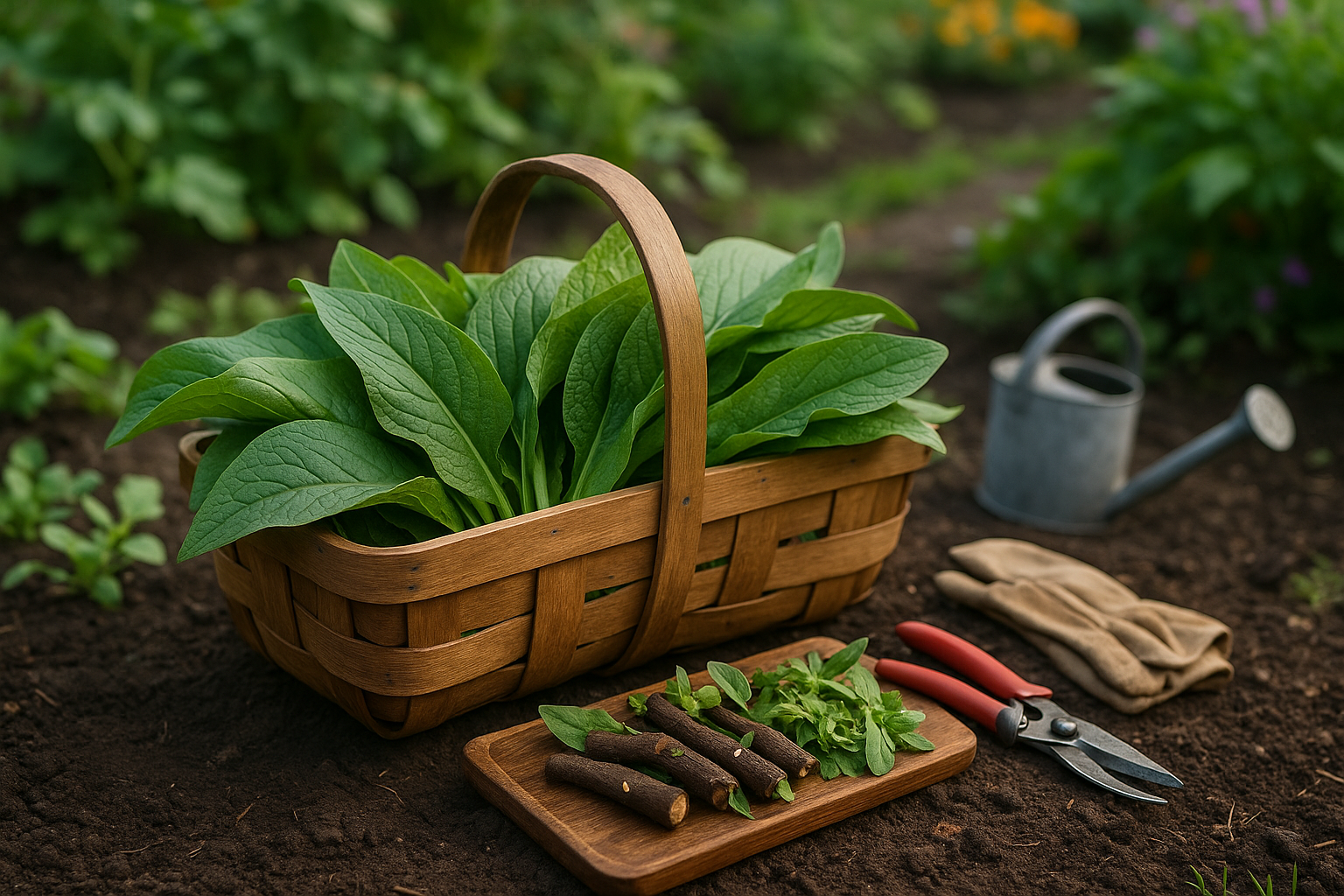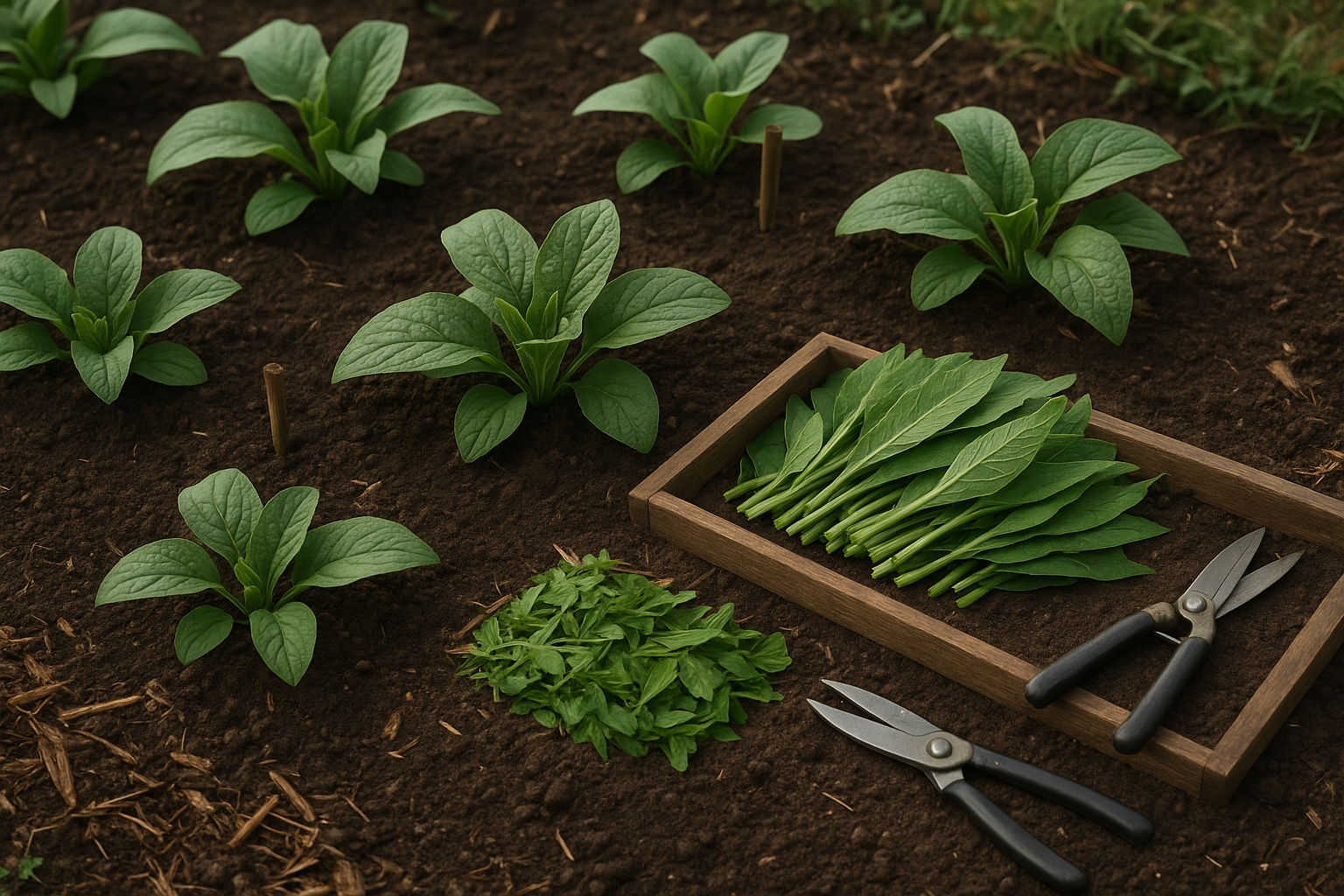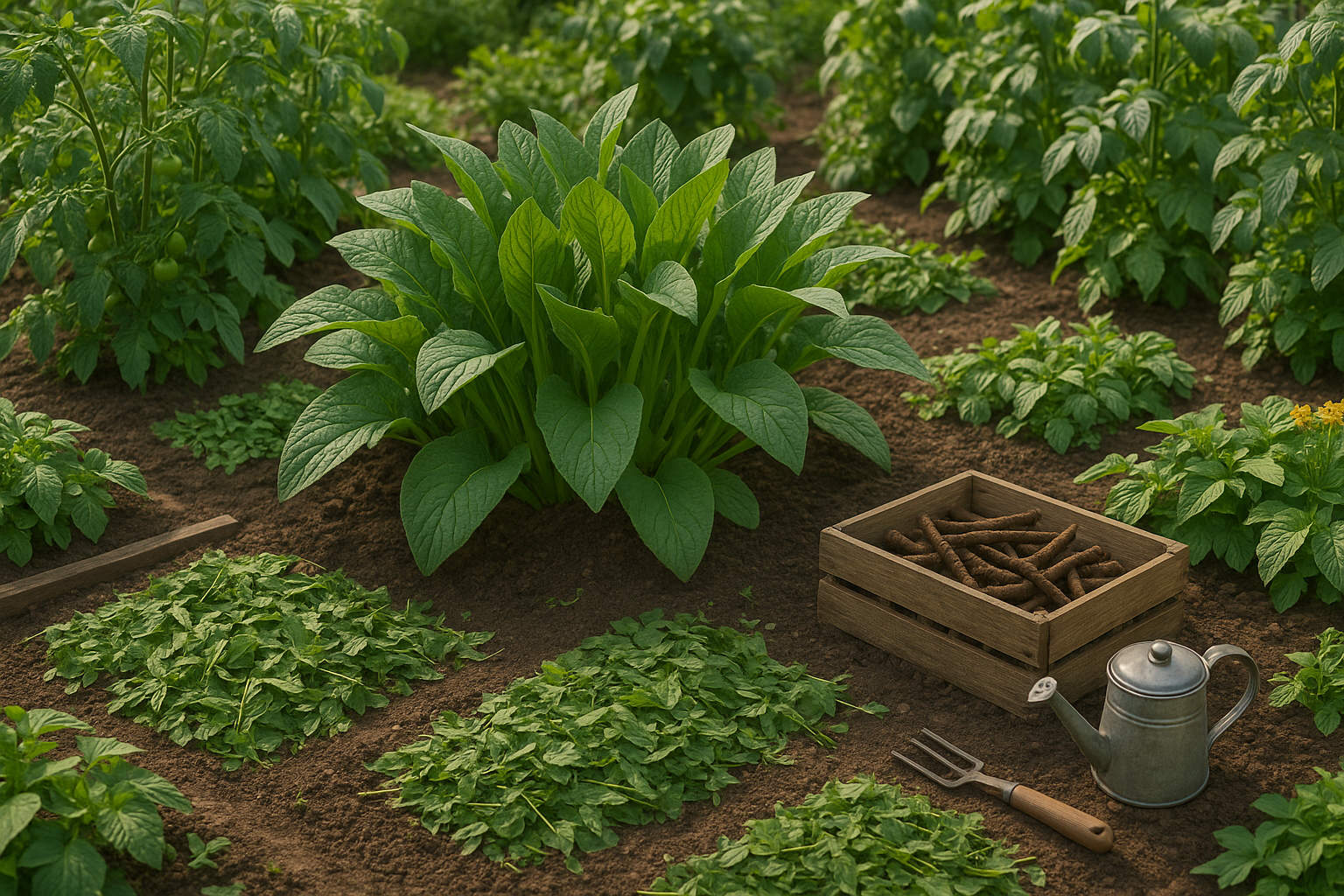Introduction to Comfrey as Mulch and Green Manure

Gardeners rave about comfrey mulch, often calling comfrey a “miracle plant” in the world of permaculture and organic gardening. This hardy perennial is famous for its ability to rapidly grow deep roots, drawing up minerals that many other plants can’t reach. When used as a mulch or green manure, comfrey offers a nutrient-rich boost to your soil, improves moisture retention, and helps suppress weeds—all without synthetic chemicals.
What’s more, its lush leaves break down quickly, releasing vital nutrients right where your plants need them most. Whether you run a small veggie patch or a larger permaculture project, comfrey is a natural ally you’ll want to know.
In this article, we’ll start by looking at comfrey’s unique properties and why it’s such a powerhouse in regenerative gardening. Next, we’ll dive into practical ways to use comfrey as a mulch—covering when to harvest, how to apply it, and the specific benefits for different crops. We’ll also explore comfrey’s role as a green manure, including tips for soil-building and composting.
Finally, you’ll find real-life examples and advice on getting started so you can make the most of this extraordinary plant in your own garden.
What Makes Comfrey Special?
Comfrey stands out in the garden for several impressive reasons, making it a favorite among eco-conscious growers. With its deep taproot reaching far below the topsoil, comfrey pulls up hard-to-reach minerals and nutrients like potassium, calcium, and magnesium, storing them in its lush, broad leaves. These nutrients become instantly accessible once the leaves decay or are used as mulch, feeding the topsoil and surrounding plants.
Unlike many common mulching plants, comfrey is a rapid grower—you can cut it several times a season, and it quickly replaces the harvested leaves, providing an ongoing source of leafy biomass. This robust growth and rich nutrient profile mean comfrey creates a natural “fertilizer sheet” when its leaves are spread over garden beds, breaking down faster than tougher mulches like straw or wood chips and delivering nutrients directly to plant roots.
While popular green manures like clover and vetch are excellent at fixing nitrogen and adding some organic matter, comfrey goes further by mining deeper minerals, making it a potent supplement to basic cover crops. For gardeners wanting fast results, comfrey’s combination of rapid regrowth, nutrient-dense foliage, and soil-busting roots make it a dynamic choice over more traditional mulches like grass clippings or leaf mold.
Just remember to keep it where you want it—comfrey’s vigorous nature can lead it to spread quickly if not managed!
How to Grow and Harvest Comfrey for Mulch

Growing comfrey for mulch in your home garden is a rewarding way to supercharge your soil with natural nutrients. Start by choosing a sunny to partially shaded spot with well-drained soil—comfrey thrives almost anywhere but prefers deep, rich earth.
Plant crown cuttings or root sections, spacing them about two feet apart to give them room to spread. Spring or early fall is the best time to establish new plants, as the soil is typically moist and temperatures are mild.
Once planted, keep the area weed-free and water regularly until the plants are established; after that, comfrey is largely self-sufficient.
Harvesting Comfrey
For harvesting, wait until the plant is at least a year old so the roots have time to mature. Begin cutting leaves when they reach about two feet tall, usually two to four times throughout the growing season, starting in late spring.
Use sharp garden shears and take care to leave at least two inches of stem above the ground—this allows for quick regrowth and multiple harvests. Always wear gloves and long sleeves, as comfrey’s hairy leaves can irritate sensitive skin.
Using Comfrey as Mulch
When spreading comfrey as mulch, chop the leaves roughly and lay them thickly around fruit trees, vegetables, or flower beds. Their rapid decomposition releases beneficial nutrients into the soil.
Maintaining Your Comfrey Patch
To keep your comfrey patch healthy and productive, never harvest all the leaves at once, and give your plants a season to rest every few years. This sustainable approach ensures a steady supply of mulch and robust, long-lasting comfrey in your garden.
Using Comfrey as Mulch
Using comfrey as mulch in your garden is simple and highly effective, offering multiple ways to boost your soil’s health while making maintenance easier.
Start with the direct mulch method: cut mature comfrey leaves (be sure to wear gloves, as the leaves can be prickly) and lay them thickly around the base of your plants, leaving a small gap around the stems to prevent rot.
Alternatively, try the popular chopped-and-drop approach—use pruners or your hands to chop the leaves and stems into smaller pieces right where you want them to decompose, creating a quick, nutrient-rich layer.
For extra lushness, the layering method works wonders: place comfrey as a base layer, then top it off with grass clippings, straw, or shredded leaves to form a multi-textured mulch.
Whichever way you choose, comfrey breaks down rapidly, releasing essential nutrients like potassium, calcium, and nitrogen into the soil. This rich mix supports strong plant growth, suppresses weeds beneath its dense cover, and reduces evaporation to help your beds stay moist during hot spells.
Plus, the decomposition process feeds beneficial soil microbes, building a thriving underground ecosystem.
For best results, combine comfrey with drier materials such as wood chips or straw to create a balanced mulch that doesn’t break down too quickly or become slimy. Mixing layers helps keep pests at bay and ensures your mulch stays airy, allowing for better water penetration and root aeration.
Using comfrey this way, you’ll enjoy a healthier, more resilient garden with less weeding, watering, and fertilizing—truly a win-win for busy gardeners aiming for sustainable abundance.
Comfrey as Green Manure and Compost Booster
Green manure is a technique where fast-growing plants are cultivated and then turned into the soil to enrich it with organic matter and nutrients. Comfrey stands out as an especially effective green manure thanks to its deep taproots, which mine valuable minerals like potassium, calcium, and nitrogen from deep in the subsoil, making them available to other plants.
To get the most out of comfrey, simply let the leaves grow large, then cut them back two or three times a season. For garden beds, chop the fresh leaves and lay them directly over the soil, then dig them in after a week or two. This boosts soil fertility and structure.
For compost piles, add chopped comfrey leaves in alternating layers with other green and brown materials. Comfrey is high in nitrogen and acts as a natural activator, speeding up decomposition and helping to break down tougher ingredients.
As comfrey breaks down, it releases its bounty of nutrients quickly, making it ideal for feeding heavy-feeding plants like tomatoes or potatoes. Its rapid growth also means you can harvest comfrey several times a year, ensuring a constant supply of this powerful natural fertilizer for both soil-building and compost acceleration.
Common Questions and Cautions
Comfrey is often rumored to be highly invasive, but with a few smart precautions, it’s easy to keep under control. To prevent unwanted spreading, stick to Russian comfrey (Symphytum x uplandicum), which produces very few viable seeds; regular comfrey (Symphytum officinale) can self-seed aggressively.
Always harvest leaves before they flower, and avoid planting near delicate beds. Root barriers or planting comfrey in containers can also help keep it in check.
Many worry about comfrey’s toxicity, but this is mostly a concern when ingested in large amounts by humans or livestock. Topical use in the garden and composting the leaves are widely considered safe. Despite myths, animals rarely eat comfrey unless grazing options are limited.
For gardeners, overusing comfrey mulch or tea can sometimes overwhelm plants due to its high nutrient content—dilute comfrey tea before applying, and use composted leaves in moderation.
If comfrey wilts or shows yellow spots, check for root congestion and waterlogged soils, as it prefers well-drained beds. Address slugs early on, as young comfrey leaves can attract them.
With proper placement and a watchful eye, comfrey helps gardens thrive without causing headaches.
Practical Tips for Getting Started
Starting with comfrey as mulch or green manure is easier than you might think. Begin by sourcing healthy comfrey plants or root cuttings from reputable nurseries, gardening websites, or experienced gardeners. Try sites like Strictly Medicinal Seeds or local plant swaps for reliable stock.
When planting, choose a spot where comfrey won’t crowd out your vegetables, as it grows vigorously. Make sure to dig deep holes to accommodate its strong roots. Once established, snip mature leaves every few weeks and layer them around crops like tomatoes, potatoes, or fruit bushes—comfrey pairs especially well with these due to its rich mineral content.
As you use comfrey in different garden areas, pay close attention to how your plants respond and adjust your mulching schedule accordingly, based on their health and the growth rate of the comfrey. Don’t hesitate to tweak your approach; observation and small experiments will help you discover what works best for your unique garden.
